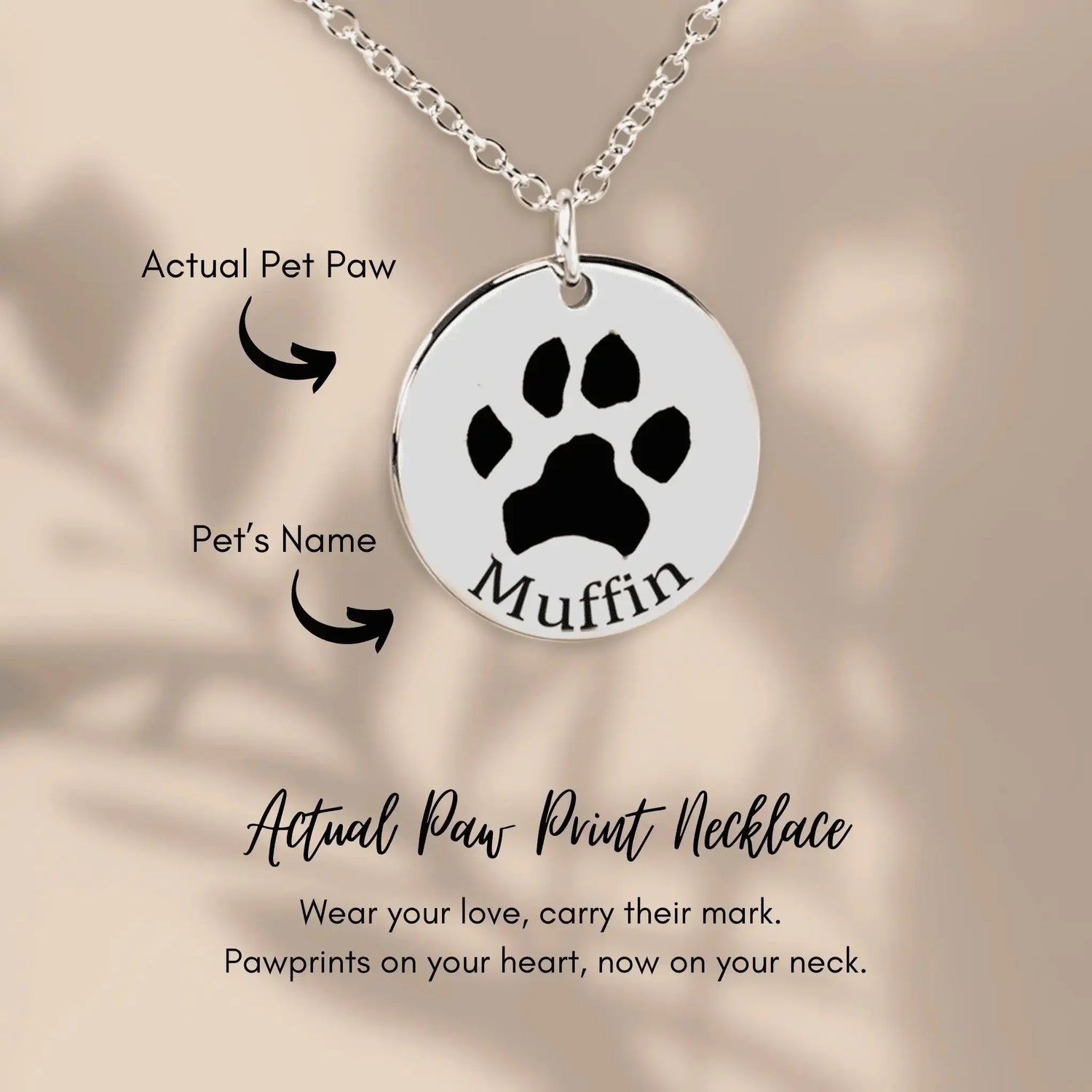How to Entertain Indoor Cats: A Purr-fect Guide to a Happy Kitty
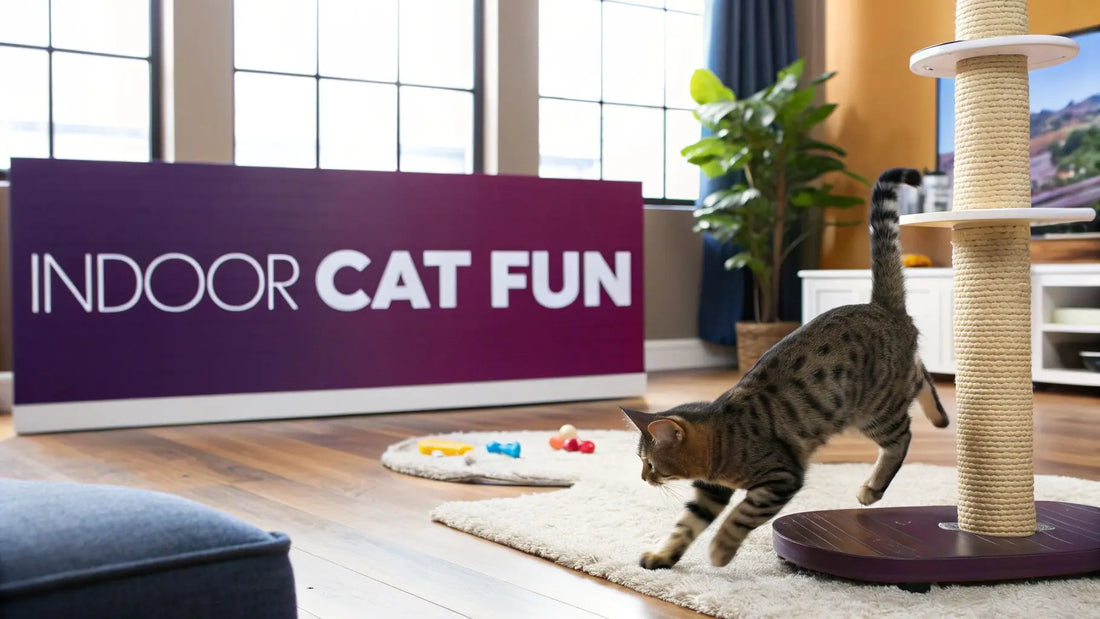
So, you're wondering how to entertain your indoor cat? The secret is actually pretty simple: you just need to tap into their inner hunter! 🐅 With a little interactive play, some clever puzzle feeders, and an environment that sparks their curiosity, you can turn a bored kitty into a happy, fulfilled companion. Our mascot, Floofie, gives this advice two paws up! 👍👍
Understanding Your Cat's Need for Adventure
Have you ever caught your cat staring out the window with that intense, focused gaze? 😼 Floofie gives us that look all the time. It's the little tiger inside every housecat, dreaming of the wild. Even the cuddliest, most docile lap cat has a hunter's heart, hardwired with instincts to stalk, chase, and pounce.
Giving those instincts an outlet is about so much more than just fun and games—it's a fundamental need. When an indoor cat can't burn off that natural energy, they can get bored, stressed, and even a little destructive. That's when you see shredded couches, surprise ankle attacks, or those frantic 3 AM zoomies.
This is where environmental enrichment comes into play. It’s not just a fancy term; it's the key to a happy, well-adjusted cat.
Why Enrichment Is So Important
At its core, enrichment is all about creating a stimulating world for your cat right inside your home. Think of it as building them a tiny, thrilling jungle gym in your living room. A lack of stimulation is a huge issue for our feline friends. Cats are the second most popular pet in the U.S., with nearly 49 million households expected to have one by 2025. But the reality is, many of those indoor kitties are seriously under-stimulated, which can lead to boredom and even health problems.
Animal behaviorists often point out that just 10-15 minutes of dedicated playtime twice a day can make a world of difference for their well-being. If you're curious, you can learn more about current pet ownership trends and see why keeping them engaged is so critical.
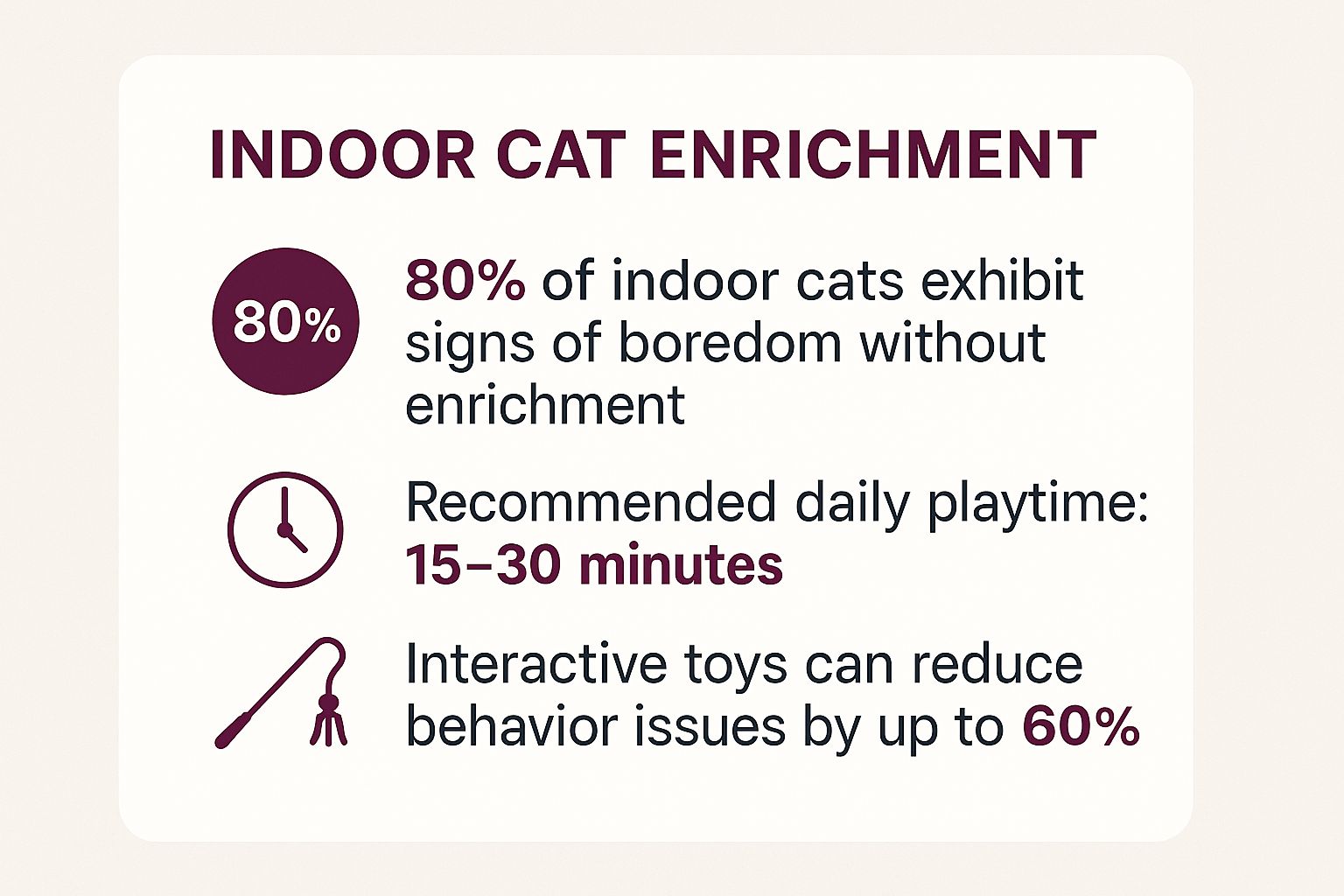
The numbers really speak for themselves. A small investment of your time each day, along with the right kinds of toys, can go a long way in preventing common behavior problems before they start.
Floofie's Quick-Start Enrichment Plan
Ready to get the fun started? You don't need a huge budget or a mansion to make it happen. The best way to entertain an indoor cat is to offer a mix of activities that challenge their mind and body.
To make it easy, here's a simple plan to get you started on the right paw.
| Enrichment Type | Why It's Important | Easy Idea to Try Today |
|---|---|---|
| Interactive Play | Simulates the hunt, satisfies prey drive, and strengthens your bond. | Grab a feather wand and make it dart around corners and under furniture like a real critter. |
| Solo Adventures | Keeps their mind busy and prevents boredom when you're not around. | Hide a few high-value treats inside a puzzle feeder or a simple cardboard box. |
| Vertical Space | Lets them climb, perch, and feel secure by surveying their territory. | Clear off a sturdy bookshelf or place a cat tree near a window. |
| Sensory Fun | Engages their senses of sight, sound, and smell, just like the outdoors. | Set up a comfy window perch for some "Cat TV" (bird watching!). |
This table gives you a great starting point for building a more exciting world for your furry friend, one small step at a time.
Floofie’s Tip: The goal is to make their indoor world as fascinating as the great outdoors. A happy cat is one whose mind and body are active, which is the best way to stop boredom in its tracks. 💖
Mastering the Art of Interactive Play
Ready to get in on the action? 🐾 Interactive play is, without a doubt, the best way to kick boredom to the curb, deepen your bond, and let your cat’s inner tiger out to play. This isn't just about aimlessly dangling a string; it’s about becoming the most exciting, unpredictable prey your cat has ever hunted.
Your goal is to make that toy come alive. Think like a bird, a mouse, or a skittish bug. A simple feather wand is a fantastic place to start. Don't just wave it around—make it flutter erratically, twitch nervously, and then suddenly zip behind the couch. The magic is in the unpredictable movement that mimics the real thing.
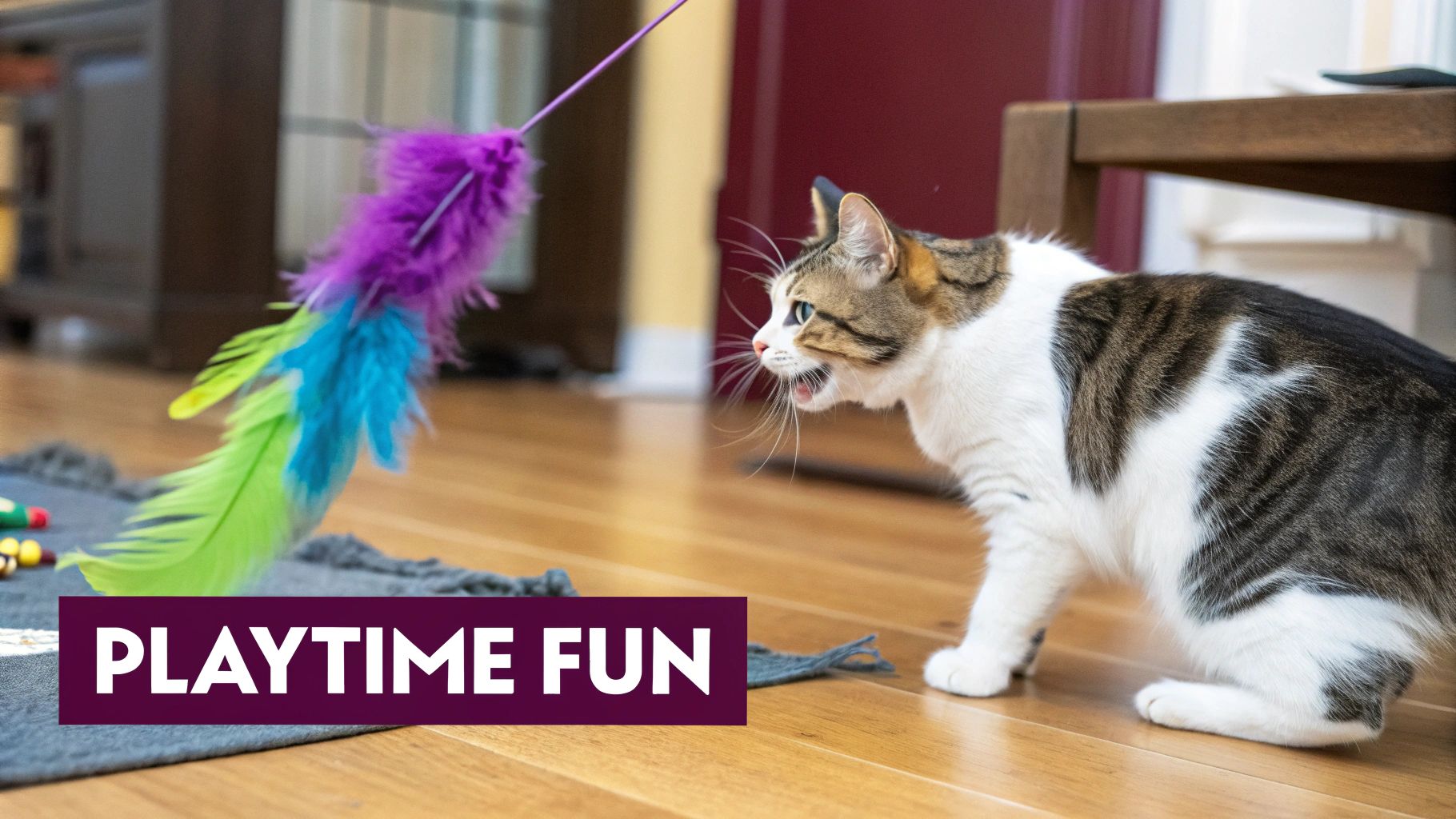
This kind of engagement taps directly into a cat's natural prey sequence: stalking, chasing, pouncing, and finally, capturing. Letting them complete this whole cycle is what makes playtime truly satisfying, leaving your cat feeling proud and content.
Think Like Prey, Not a Person
Floofie's number one pro tip is to think like a mouse! 🐭 A real mouse wouldn't just prance out into the middle of the room and do a little dance. It would dart from one hiding spot to another, peek out from under a rug, and then scurry for its life just as your cat closes in. That’s the kind of action that ignites their powerful hunting instinct.
Here’s how you can level up your playtime:
- Use Your Environment: Drag the toy over the arm of the sofa, behind the curtains, and through a cardboard box. This encourages stalking and gets their brain working.
- Let Them Win: This is so important! You have to let your cat "catch" the toy every now and then. A hunt with no reward is just a frustrating tease.
- Vary the Speed: Mix it up. Use slow, creeping movements followed by sudden, fast bursts. This unpredictability keeps them on their paws.
This approach turns a simple game into a thrilling adventure that keeps your cat physically fit and mentally sharp.
The Golden Rules of Playtime
Consistency is your best friend here. Try to schedule short, intense play sessions of about 10-15 minutes, maybe once or twice a day. This routine perfectly mirrors how cats hunt in the wild—in brief, energetic bursts.
And a quick word on laser pointers. They can be a blast, but that elusive red dot is prey they can never physically catch, which can sometimes lead to frustration. If you do use one, always finish the game by switching to a physical toy they can grab. Check out some of our battle-tested interactive cat toys to give them that satisfying "kill" at the end.
Floofie’s Final Pounce: Always, always put wand toys and other interactive toys away when you're done playing. This keeps them feeling special and, more importantly, prevents your cat from chewing on strings or feathers unsupervised. Keep it safe, keep it fun. Happy hunting! 🦁
Building Your Cat an Indoor Playground
Your home is your cat’s kingdom, so why not make it a castle? 🏰 Turning your living space into a feline adventure park is one of the absolute best ways to keep an indoor cat happy and engaged. It’s all about creating a world that taps into their natural instincts to climb, scratch, and explore.
It really starts with thinking vertically. Cats in the wild climb trees to survey their territory and feel safe from predators, and you can easily bring that vibe indoors. A sturdy cat tree or some cool wall-mounted shelves can make a world of difference. Floofie loves perching up high to watch over his domain (which is mostly just the living room). These additions do wonders for a cat's confidence and give them a much-needed physical workout.
It’s no surprise that this has become a bigger focus for cat owners. In the early 2020s, cat ownership in the U.S. shot up by 40%, which created a huge demand for better ways to entertain them indoors. In fact, sales for cat activity centers jumped by 15% each year between 2020 and 2024. Owners are catching on that we need to fight the boredom and health issues that can affect over half of all indoor cats.
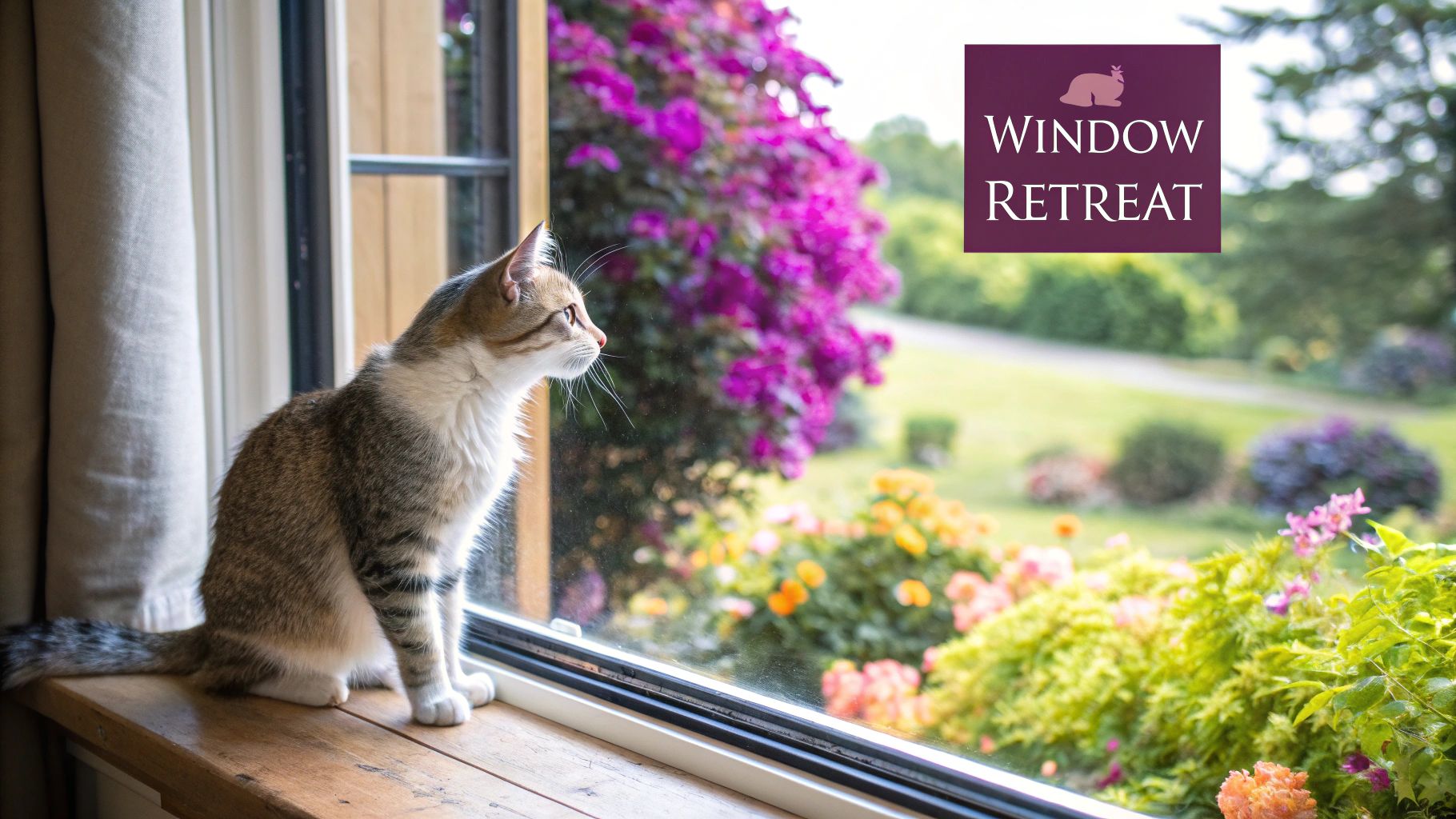
DIY Fun on a Budget
You definitely don't need to break the bank to build a fun zone for your cat. Honestly, some of the best cat playgrounds are homemade. An epic cardboard box fort with holes cut out for ambushing is a classic for a reason! You can also create a cozy window perch with just a spare blanket and a sturdy shelf, giving your cat the perfect spot to watch a little "Cat TV"—aka the neighborhood birds. 🐦
If you’re the crafty type, a DIY project can be super rewarding. We actually put together a full guide on how to make some amazing https://1qkac5-d7.myshopify.com/blogs/floofies-blog-posts/diy-cardboard-cat-furniture that Floofie has personally tested and approved. As you design your cat’s new favorite spot, think about using sustainable and eco-friendly pet products to keep things safe for your kitty and the planet.
The Mighty Scratching Post
No indoor playground is truly complete without a fantastic scratching post. This isn't just about saving your sofa; it's a vital part of your cat's health and happiness. Scratching helps them shed the outer layers of their claws, get a good muscle stretch, and mark their territory—a huge stress reliever for them.
Floofie's Scratching Secret: "I always tell my humans to place scratching posts in high-traffic areas or near my favorite napping spots. If a cat is scratching something they shouldn't be, put a post right next to it. They’ll get the hint!" 😼
To find the purr-fect one, just watch what your cat already likes to scratch.
- Sisal Rope: This is a fan favorite for its rough, satisfying texture that feels a lot like tree bark.
- Cardboard: Great for cats who prefer scratching flat surfaces. Plus, they're affordable and easy to replace.
- Carpet: The go-to choice for kitties who are already drawn to the texture of your rugs.
Giving them these kinds of outlets is a simple but incredibly effective way to keep your feline friend happy, healthy, and thoroughly entertained.
Using Puzzles and Games for Brain Training
A smart cat is a happy cat! 🧠✨ And while a good chase after a feather wand is classic fun, mental workouts are just as vital for keeping our indoor kitties sharp and content. Think of brain training as the ultimate boredom-buster. Floofie swears it’s the secret to a truly epic post-playtime nap.
Let’s talk about one of the best ways to get those little grey cells working: puzzle feeders and scent games.
These aren't just toys; they're clever gadgets that make your cat use their natural intelligence to score a tasty reward. They tap directly into a cat's instinct to forage and solve problems. Instead of wolfing down a bowl of food in ten seconds flat, they actually have to work for their meal, which is so much more satisfying for them.
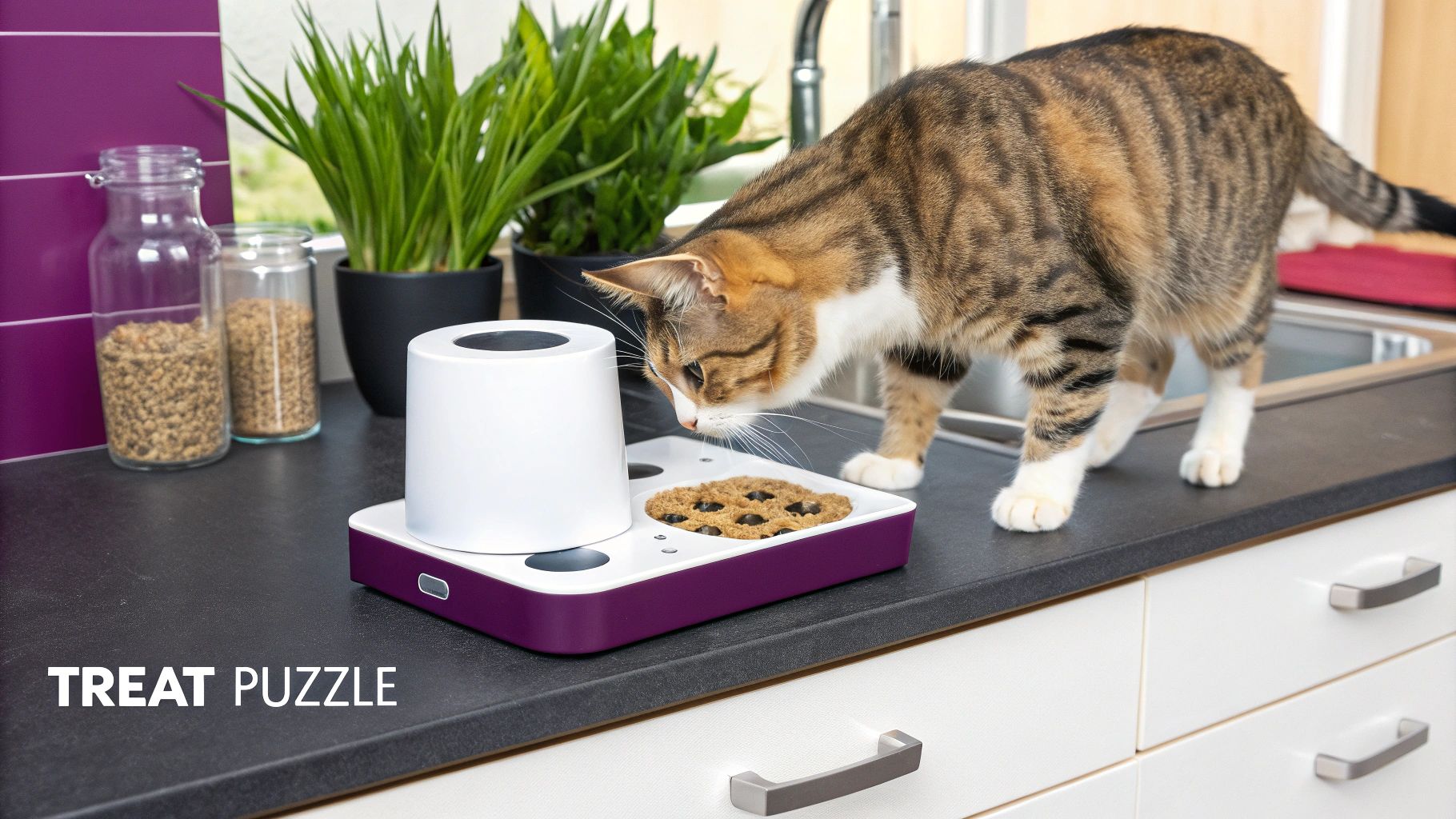
This kind of mental challenge naturally slows down fast eaters—a big win for their digestion—and gives them a much-needed outlet for their brainpower. It's basically their version of a crossword puzzle, but with delicious kibble at the end.
Choosing the Purr-fect Puzzle
The world of puzzle feeders is surprisingly vast, which is great news because it means there's a perfect match for every kitty's personality and skill level. You'll find everything from simple wobbly balls that drop treats when batted around to intricate sliding puzzles that require some serious feline focus.
Here are a few of Floofie's favorite styles to get you started:
- Wobble Feeders: These are absolutely perfect for beginners. Your cat just has to nudge and paw at the toy, and voilà, treats fall out. Our Cat UFO Food Dispenser is a great example of this fun, entry-level challenge.
- Sliding Puzzles: These feature little compartments that your cat has to slide open to get to the goodies inside. They’re an excellent next step for cats who have mastered the basics and need a bit more of a challenge.
- Stationary Mazes: These toys have fixed paths and holes where you hide the food. Your cat has to get clever and use their paws to skillfully fish out each piece.
Want to go deeper on finding the right fit for your feline genius? We've got you covered. Check out our complete guide on puzzle feeders for cats. The key is to start with something easy to build their confidence, then gradually introduce more difficult puzzles.
Floofie’s Pro Tip: "Don't just fill puzzles with boring old kibble every time! I love it when my humans mix in a few of my favorite high-value treats to make the game extra exciting. A little surprise makes the victory even sweeter!" 🏆
DIY Brain Games for Your Cat
You don't need to spend a lot of money to get started, either. A simple DIY scent game can provide just as much mental stimulation, and you can set one up right now. One of the easiest is the classic "treat hunt."
It's simple: just take a few pieces of their kibble or a favorite treat and hide them in different spots around a room. Start with obvious locations, like peeking out from under a rug or next to a chair leg. Once your cat gets the hang of using their super-powered nose to find them, you can up the ante with trickier spots—maybe on a low shelf of the cat tree or tucked inside an empty toilet paper roll.
This game is fantastic because it encourages them to explore and rely on their incredible sense of smell, making them feel like the clever little hunter they were born to be.
Tuning Into Your Cat's Senses
Not all cat entertainment has to be a wild, feather-chasing frenzy. A huge part of keeping an indoor cat happy is tapping into their incredible senses. 👃👁️👂 Let's look at some simple, low-effort ways to create a sensory playground that keeps your cat engaged, even when you're busy.
Give Them a Window to the World
Ever heard of "Cat TV"? It’s the easiest show to put on, and it’s completely free. All you need is a comfy spot—a cat tree, a sturdy shelf, or even a soft blanket on a windowsill—with a good view of the outside world.
Our own mascot, Floofie, is obsessed with his window perch. He'll spend ages just watching squirrels cause chaos and birds flit from branch to branch. It’s a real-life nature show that stimulates their powerful visual hunting instincts without them ever leaving the living room.
No interesting view? No problem. You can bring the action right to them. There are tons of videos made just for cats on YouTube, full of captivating footage of birds, mice, and fish. It’s a great digital alternative to keep their eyes sharp and their minds curious.
A Whiff of Something Wonderful
A cat’s sense of smell is their superpower, so why not make it fun? You already know about catnip, but it's not the only herb that can send a cat into a state of pure bliss. Many cats who couldn't care less about catnip will go absolutely wild for silver vine or valerian root.
These herbs are completely natural and can spark a goofy, playful reaction that's as fun for you to watch as it is for them to experience.
- Catnip: The go-to classic. It brings on a state of euphoria for about 50-75% of adult cats.
- Silver Vine: A fantastic alternative from Asia that often gets a big reaction from cats who are immune to catnip's charms.
- Valerian Root: While it tends to calm humans down, it often acts as a stimulant for cats, getting them revved up for a play session.
Try sprinkling a little on their favorite scratcher or tossing them a herb-filled toy. We love our Floofie-approved Silver Vine Cat Toy because it’s a mess-free way to let him enjoy the scent.
Floofie’s Fun Fact: "Did you know the catnip response is genetic? If your cat doesn’t react, it's nothing personal! That’s why it’s so much fun to experiment with silver vine—you might discover their new favorite thing." 🌿
It's All About the Texture
Don't overlook their sense of touch! Cats explore the world with their paws, and offering a variety of textures is an easy win for enrichment. Think about the different surfaces in your home and how you can mix them up.
A crinkly play tunnel, for instance, provides a weirdly satisfying sound and feel under their paws. A super-soft, fuzzy blanket becomes the perfect spot for some serious biscuit-making. Even a humble cardboard scratching pad gives them a rough, satisfying texture that feels great to dig their claws into.
By making their world a rich tapestry of things to see, sniff, and feel, you turn your home into a fascinating kingdom they’ll never get tired of exploring.
Keep It Fresh: The Magic of Toy Rotation
Ever notice that brand-new crinkle ball is suddenly collecting dust under the couch? Or that the feather wand that once drove your cat wild now gets nothing but a bored glance? If you're nodding along, you're not alone. Our own mascot, Floofie, is a prime example of a cat who craves novelty.
It's not that they're ungrateful little furballs; it's pure instinct. In the wild, the world is constantly changing. At home, not so much. This is where a brilliantly simple strategy comes into play: toy rotation. It's one of Floofie's favorite tricks for keeping indoor cats happy, and it works like a charm.
The whole idea is to create a "toy library," tucking away most of their collection so you can reintroduce them later.
How to Create a Toy Library for Your Cat
Think about it from your cat's perspective. When a toy is always lying around, it just becomes part of the furniture. There’s no excitement, no thrill of the "hunt." Behavior experts call this habituation, and it's the number one killer of kitty playtime.
By rotating toys, you make old things new again. Here's a super simple system we use for Floofie:
- Round 'Em Up: First, gather every single cat toy in your house. Yes, even the ones under the fridge.
- Create Batches: Sort the big pile into 3-4 smaller, separate groups. Try to give each batch a good variety—maybe one has a kicker and a puzzle, another has a wand and some furry mice.
- Stash Them Securely: Put all but one of the batches into a closet or a sealed bin that your cat can't break into. The out-of-sight, out-of-mind principle is key here.
- The Weekly Swap: Once a week, pack up the current toys and bring out a "new" batch from storage.
You'll be amazed at the reaction. That fuzzy mouse they haven't touched in a month is suddenly the most fascinating object in the world again! For a real showstopper, you can slip something extra exciting like our Fish Kicker Toy into one of the bins. It’ll be a fantastic surprise when it finally makes an appearance!
Floofie’s Top Tip: "My humans keep my toy bins in the garage. When they bring a new set out, it even has all sorts of new smells! It’s like getting a box of brand-new treasures every single week. 10/10 would recommend." 📦
Think Beyond the Toy Box
This rotation strategy isn't just for store-bought toys. You can apply the same logic to other objects to spark your cat's curiosity.
We all know a plain cardboard box is basically a five-star cat resort. A big paper bag from the grocery store (just be sure to snip the handles off for safety!) is an instant adventure cave. These simple things provide new textures and smells to explore.
Even bringing in a new, cat-safe plant for them to sniff can be a huge sensory treat. A little bit of change goes a long, long way in preventing boredom and keeping your cat's world feeling fresh and full of possibilities.
Got Questions About Keeping Your Cat Entertained?
Wondering about the best ways to keep your indoor cat happy and engaged? You're definitely not alone. It's one of the most common things we cat parents think about. Let's tackle some of the biggest questions that come up.
How Do I Know if My Indoor Cat Is Bored?
This is a great question, because a bored cat often just looks like a "bad" cat. They're not trying to be naughty; they're just trying to create their own excitement!
You might notice them over-grooming, meowing excessively at you for no clear reason, or suddenly getting wild zoomies in the middle of the night. A bored cat might also start pestering other pets in the house or decide your sofa is the perfect new scratching post. If you're seeing these behaviors, it's a good sign they need more stimulation.
What if My Cat Just Ignores All the Toys I Buy?
Oh, the classic tale of the cat who prefers the box to the expensive toy inside it! 😹 Don't take it personally. It usually just means you haven't found their specific "prey preference" yet.
Think about it: some cats are bird-watchers, so they go nuts for feather wands. Others are more interested in stalking critters on the ground, so they might love little furry mice or crinkle balls that skitter across the floor.
The key is to experiment. Try a few different types of toys and, more importantly, make them move like real prey. A toy that just sits there is boring, but one that darts behind a corner or twitches unpredictably? That's a challenge! Rotating their toys every week or so also helps keep things fresh and exciting. Our Fish Kicker Toy is a huge hit with ground hunters!
Are Laser Pointers Actually Good for Cats?
They can be a blast, but you have to use them the right way. The big issue with laser pointers is that they offer a chase with no reward. Your cat can never actually catch the dot, which can lead to some serious frustration for your little hunter.
So, here's the golden rule: always end the laser session by letting them catch something real.
After a few minutes of chasing the dot, switch to a physical toy like a wand or a stuffed mouse. Let them pounce on it, "kill" it, and feel the satisfaction of a successful hunt. Tossing them a tasty treat right after they "capture" their prize really seals the deal and makes them feel like the clever predator they are.
Ready to turn your home into the ultimate feline playground? FloofChonk has everything you need, from brain-teasing puzzle feeders to irresistible toys that will get any kitty excited. Check out our full collection and get the fun started! 🎉
